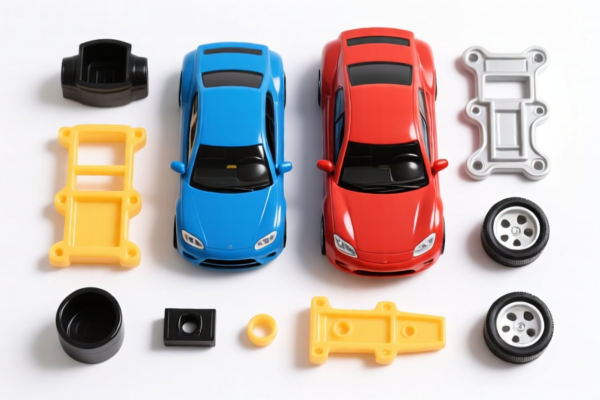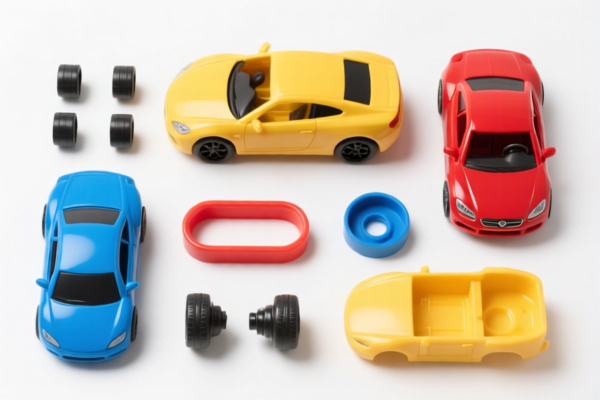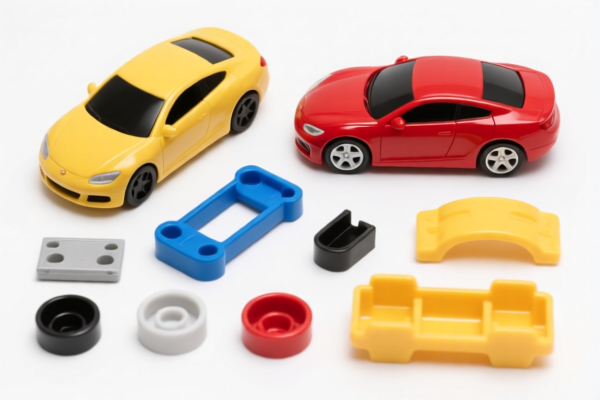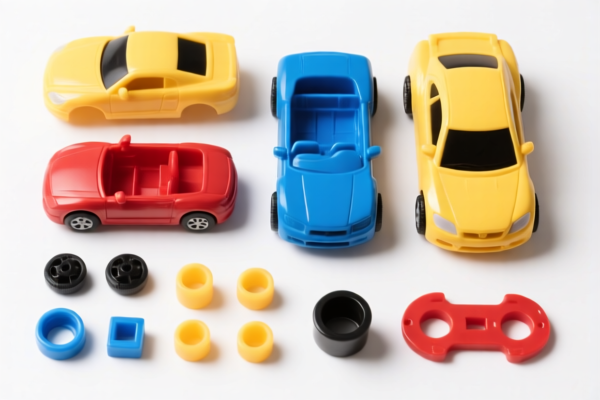| HS Code | Official Doc | Tariff Rate | Origin | Destination | Effective Date |
|---|---|---|---|---|---|
| 9503000090 | Doc | 30.0% | CN | US | 2025-05-12 |
| 9503000071 | Doc | 30.0% | CN | US | 2025-05-12 |
| 9506400000 | Doc | 35.1% | CN | US | 2025-05-12 |
| 9506598060 | Doc | 41.5% | CN | US | 2025-05-12 |
| 8548000000 | Doc | 55.0% | CN | US | 2025-05-12 |
| 8509905500 | Doc | 59.2% | CN | US | 2025-05-12 |
| 3926903000 | Doc | 59.2% | CN | US | 2025-05-12 |
| 3926909989 | Doc | 42.8% | CN | US | 2025-05-12 |
| 3916905000 | Doc | 60.8% | CN | US | 2025-05-12 |
| 3916903000 | Doc | 61.5% | CN | US | 2025-05-12 |




Steering (Toy Car Accessories)
Definition: Steering components are accessory parts used to control the direction of toy cars, typically remote-controlled (RC) cars, but also applicable to push/pull models. They allow the user to maneuver the vehicle.
Material:
- Plastic: The most common material, offering a balance of low cost, light weight, and sufficient durability for recreational use. Types of plastic include ABS, nylon, and polypropylene.
- Metal: Aluminum alloys and steel are used in higher-performance or more robust steering systems. Metal components increase strength and precision, often found in competition-grade RC cars.
- Carbon Fiber: Used in high-end RC cars for lightweight strength and rigidity. Often used for steering links and plates.
Purpose:
The primary purpose of steering accessories is to translate user input (from a remote control or physical manipulation) into directional control of the toy car. This includes:
- Directional Control: Allowing the car to turn left, right, and maintain a straight course.
- Responsiveness: Providing accurate and quick response to steering commands.
- Durability: Withstanding impacts and stresses during operation.
Function:
Steering systems function through a series of interconnected components:
- Servo: (Primarily RC cars) An electromechanical device that receives signals from the receiver and converts them into rotational movement. The servo arm is connected to the steering linkage.
- Steering Linkage: A system of rods, arms, and connectors that transmit the servo's motion to the wheels. This can be direct or indirect.
- Steering Knuckles/Hubs: Connect to the wheels and allow them to pivot for steering.
- Steering Rack/Arms: (Some designs) Convert rotational motion into linear motion to move the steering knuckles.
- Steering Wheel/Control Mechanism: The user interface for controlling the direction (remote control or physical wheel).
Usage Scenarios:
- Remote Controlled (RC) Cars: The most common application, used in off-road buggies, on-road touring cars, trucks, and other specialized RC vehicles.
- Push/Pull Toy Cars: Simpler steering mechanisms, often using direct linkages to the front wheels.
- Model Car Kits: Steering components are often included in model car kits for assembly and customization.
- Customization/Upgrades: Steering components are frequently upgraded for improved performance, precision, and durability.
Common Types:
- Servo-Based Steering: (RC Cars) The most prevalent type, utilizing a servo motor for precise control. Variations include:
- Standard Servo Steering: Common for general-purpose RC cars.
- High-Torque Servo Steering: Used for larger or heavier RC vehicles or demanding terrain.
- Digital Servo Steering: Offers faster response and greater precision.
- Direct Steering Linkage: (Push/Pull Cars) A simple system where the steering wheel/control is directly connected to the front wheels.
- Indirect Steering Linkage: (Some RC and push/pull cars) Uses a series of linkages to amplify steering motion.
- Steering Assemblies: Pre-assembled units containing all necessary components for easy installation and replacement.
- Knuckle Arms: Individual arms connecting the wheels to the steering system, often upgraded for adjustable camber and caster.
- Steering Racks: Found in some RC cars, converting rotational motion to linear motion for steering.
Toy car accessories, specifically steering components, fall under several potential classifications based on the provided information.
- 9503000090: This HS code covers “Tricycles, scooters, pedal cars and similar wheeled toys; dollsʼ carriages; dolls, other toys; reduced-scale (“scaleˮ) models and similar recreational models, working or not; puzzles of all kinds; parts and accessories thereof Other”. Chapter 95 pertains to toys, playthings and games and the specific heading covers a broad range of toy parts and accessories. This is a general classification for toy components. The total tax rate is 30.0%.
- 9503000071: This HS code also covers “Tricycles, scooters, pedal cars and similar wheeled toys; dollsʼ carriages; dolls, other toys; reduced-scale (“scaleˮ) models and similar recreational models, working or not; puzzles of all kinds; parts and accessories thereof “Childrenʼs productsˮ as defined in 15 U.S.C. § 2052: Other: Labeled or determined by importer as intended for use by persons: Under 3 years of age”. This is a more specific classification within the toy category, applying to children’s products intended for use by children under 3 years of age. The total tax rate is 30.0%.
- 3926903000: This HS code covers “Other articles of plastics and articles of other materials of headings 3901 to 3914: Other: Parts for yachts or pleasure boats of heading 8903; parts of canoes, racing shells, pneumatic craft and pleasure boats which are not of a type designed to be principally used with motors or sails”. If the steering component is made of plastic and is a part for a pleasure boat, this HS code may be applicable. The total tax rate is 59.2%.
- 3926909989: This HS code covers “Other articles of plastics and articles of other materials of headings 3901 to 3914: Other: Other”. This is a general classification for other plastic articles. If the steering component is made of plastic and doesn’t fall under more specific classifications, this HS code may be applicable. The total tax rate is 42.8%.
Regarding HS code 9503000071, please note that the product must be labeled or determined by the importer as intended for use by persons under 3 years of age.
Customer Reviews
The list of HS codes with links to the official documentation made verifying the tariff rates easy. I just wish the site had more details on the 391690 series for plastic parts.
The detailed breakdown of steering components and their functions helped me understand the parts I need for my model car kit. The material options were especially useful.
I found the HS code 9503000071 with the correct 30% tariff rate. The note about it being for children under 3 years old was really helpful for my product classification.
The explanation about HS code 3926903000 for plastic parts was very useful. I didn’t know it could apply to toy steering components too.
Great site for finding HS codes for toy car parts. The details on servo-based steering and digital servo options were exactly what I needed for my project.